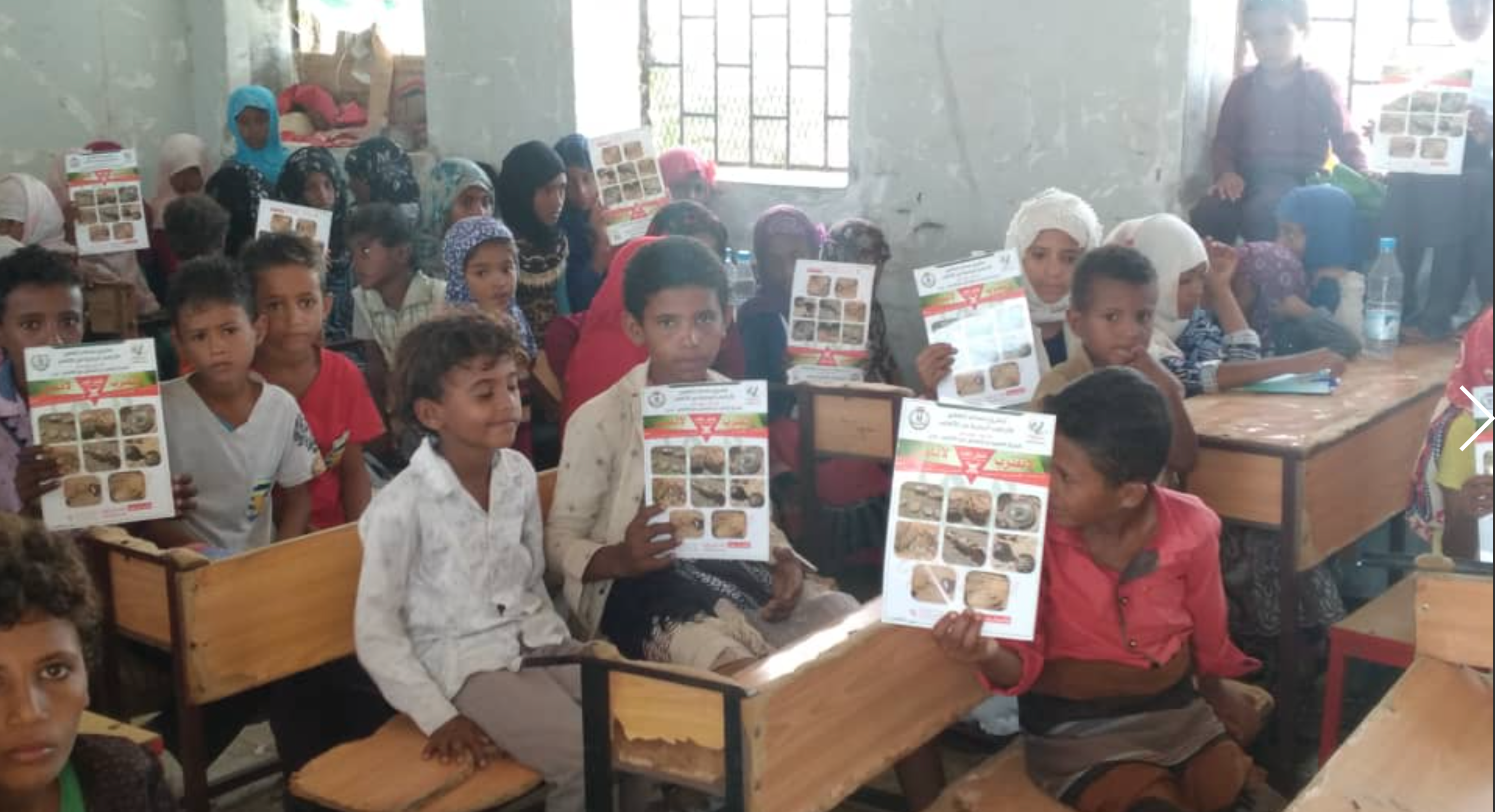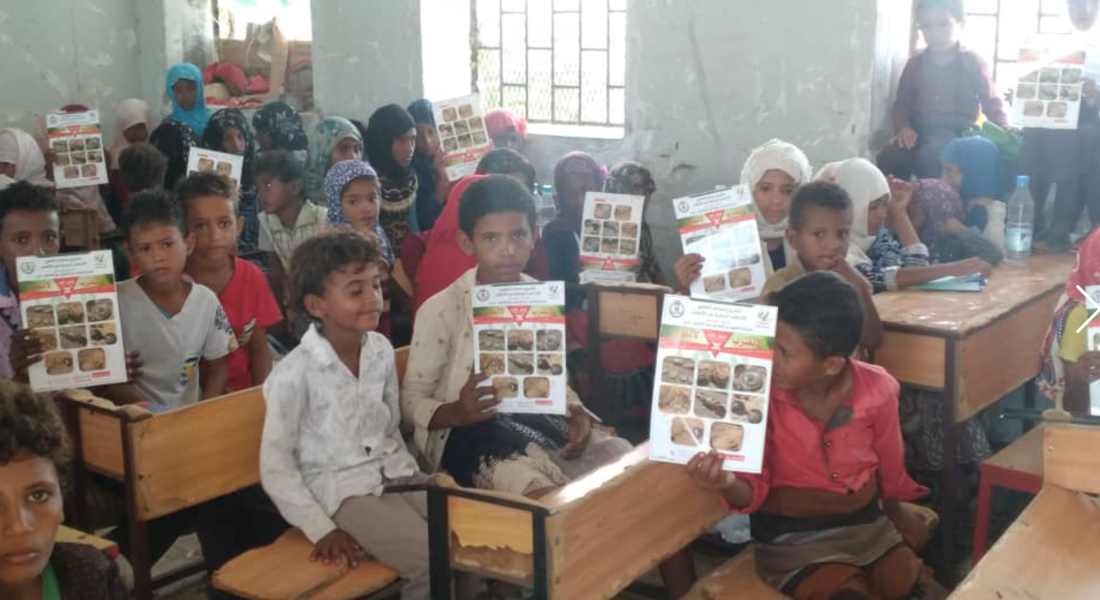
As the children huddle on the rough ground and whisper to each other, a mine clearance expert starts distributing flyers with photos of deadly explosives.
We are in Yemen’s Taiz Governorate and Masam’s Project Manager and Technical Advisor Loedie Voges is about to start a Mine Risk Education (MRE) and awareness session for the village’s schoolchildren in an area saturated with a variety of landmines and explosive remnants of war (ERW).
Since the conflict between Yemen’s pro-government forces and Houthi militias escalated in 2014, liberated strategic areas (such as the southwestern Governorate of Taiz which has been at the centre of some of the most intense fighting Yemen has seen since the conflict intensified) have been left littered with Houthi anti-personnel mines and anti-tank mines, along with unexploded ERW.
In Yemen — as well as in other severely mine-contaminated countries — a multi-tiered approach is necessary for humanitarian mine action to be effective. Mine clearance, or demining, itself is not enough.
Humanitarian mine clearance projects must carry out MRE, which the International Mine Action Standards (IMAS) describes as activities which seek to reduce the risk of injury from landmines and ERW by raising awareness and promoting behavioural change, including public information dissemination, education and training, and community mine action liaison.
Child mine risk education
Back in Taiz and there is an eery silence as Voges starts his presentation — translated by one of Masam’s interpreters and supported by members of the local demining team operating in the area.
As the discussion goes on, Masam’s experts inform the group of children of the danger of unexploded ordnance (UXO), landmines and other unidentified items. The children are taught how to react should they encounter these items.
During the session, the Technical Advisor also tells the village’s youngsters about Masam’s work on the ground and asks them to help Masam’s demining teams by immediately informing the deminers if they stumble upon potential minefields, UXOs and other unidentified items.
“We target groups like schools because children are one of the best informants you can get due to them playing everywhere. They see things adults normally miss, due to their curiosity,” Voges explained after the session.
“We show them pictures of items found in Yemen as well as posters to stick on walls at schools, shops, markets etc…”
The key takeaways from today’s session? Not to touch or move any item, how to mark an item that has been found and who to contact at Masam.
“We normally provide them with a contact number of the clearance teams working in the area in their vicinity, close to them,” Voges said.
“MRE is the tool to make the public aware and ensure they are part of making their country safe. We also target groups in areas we suspect to be Dangerous Areas because of the history of the area especially where there were previous conflicts taking place.”
Masam also targets the Military, Police, and villagers through the village chiefs who organise the gathering of their people for MRE sessions.
Landmine reports and vigilance
MRE also serves another purpose. It helps to prevent the planting of new minefields.
“It allows civilians to become more vigilant and watch out for any strangers [who may plant landmines] in their vicinity — which makes it difficult for the militias to infiltrate areas and plant landmines,” Voges added.
Masam is not alone in delivering MRE to Yemenis, and the efforts are paying off. Voges describes instances where local demining teams received reports of potential landmines and other EWR from locals who had previously received MRE.
“You must remember the United Nations Development Programme (UNDP), Halo Trust, The Development Initiative (TDI) who are also working in Yemen carry out MRE. It is one of the most important means for any mine clearance company or organisation when on a survey to obtain information.”
As Yemen’s battlegrounds continue to shift, and Houthi militias retreat from certain areas, the need for MRE is more important than ever.
“This process should proceed long after the war. As an example — we still carry out MRE in the UK, where we are still finding Second World War items that we need to deal with.”
“MRE is of utmost importance and must be the focus of main effort over and above the finding of ERW, landmines, improvised explosive devices (IEDs) and UXO as there will be vast amounts of remnants of war for many years after the war ends in Yemen.”
Since it first entered Yemen in mid-2018, Project Masam has located and destroyed 293,561 explosive devices, effectively clearing 28,379,866sqm of Yemeni liberated land to ensure displaced civilians can return to their homes, as well as secure access to farmland, water sources and pastures.
Total clearance includes 4,252 banned anti-personnel mines, 98,725 anti-tank mines, 6,168 IEDs and 184,416 UXO (as at 10 December 2021).
This article was first published on Medium.

